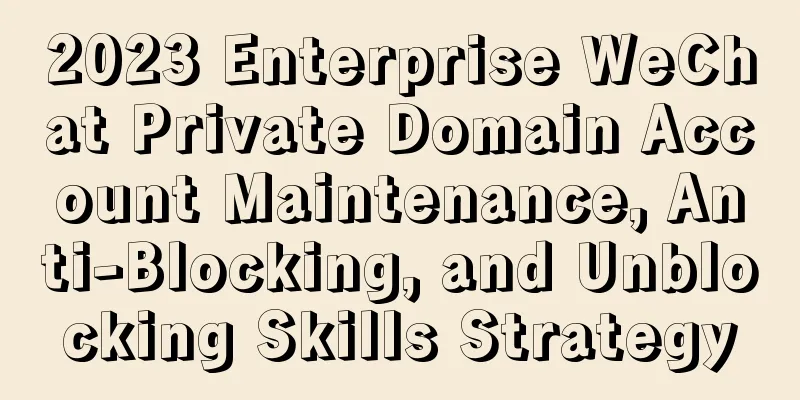From the role positioning of "Chang Xiang Si" to the brand's hidden line

"Chang Xiang Si" has been very popular recently. There is one woman and many men, which is very refreshing and the character construction is also very interesting. There are many analyses on the Internet, especially for the four male characters. Among them, there is a very interesting analysis angle: Tracing the origins of the four typical images in the play, referring to Jung's archetypes "King, Warrior, Priest, Poet: From Boy to Man, a Manual for the Advanced Male Mind" (original title: King, Warrior, Magician, Lover: Rediscovering the Archetypes of the Mature Masculine), the author divides masculinity into four archetypes: king, warrior, priest and poet.
These four types of images are not only representatives of typical characters in literary works, but also imply people's social needs and emotional expectations for these different roles. Therefore, we can learn from the substitution and setting of brand personality (that is, the brand hidden line in our course), and talk about four typical brand personalities and how to construct hidden lines: 1. Preferred type: Values and trustBrand type: The core value of this type is to become the "first choice" in people's hearts, just as Xuanxuan has always cared about "whether I am your first choice." How to build a hidden line: Such brands are usually in a leading position. After a long period of accumulation and operation, whether in terms of brand awareness or the breadth of channel laying, they are telling consumers: I deserve to be your first choice. For such brands, the key to building a hidden line is to establish mutually recognized values and continuously consolidate the foundation of trust . 1. Constructing the “greatest common divisor” value : Similar to “King”, this type of brand usually needs to go beyond itself and seek the meaning that represents the universal value of mankind, so as to establish a consensus with the broadest group of people . Coca-Cola’s “Happiness”, Fotile’s “Greatness Because of Love”, and Tencent’s “Technology for Good” are all representatives of this type. 2. Continue to gain users’ trust : According to the method mentioned in the book “Emotion Driven”, brands can consider three narrative directions to build trust: (1) Reiterate the origins of the business and brand: driven by mission (2) Highlight what the brand does besides generating profits (3) Explain that the product is genuine and important to you (moral justice) 2. Charismatic: Powerful and rebelliousBrand type : This type of brand often has a strong charm value, and its charm is mainly displayed through the strong external characteristics of "almost aggressiveness" and the core is constructed through the rebellious spirit . The former refers to the explicit tension that is "visible in the crowd at a glance", such as the appearance of Apple's products, the bold content of Netflix, Chanel's design that subverts traditional women, Marlboro's western cowboy image, etc.; while the latter refers to the rebellious spirit buried inside, which drives the brand to break away from the routine and act against common sense, becoming an excellent scenery that everyone yearns for but is not easy to obtain. How to construct the hidden line: From the company to the brand to the product spirit, create a "sense of dedication" event to realize its value vision - it seems non-commercial, even irrational. This sense of surprise can make people deeply touched by its "powerful spiritual appeal", such as Patagonia's "donation of the company to the earth" and Master's "Mars Project". These events allow the core of the brand spirit to be fully externalized, making people feel the warm, fatal, and unruly attraction, and even worship it. 3. Companionship: presence and pleasingBrand type : high-frequency, low-price, light-decision, and strong social attributes brands, which gain users' choices by constantly showing their presence and "pleasing ability" ("pleasing" here is not a derogatory term, just like everyone describes Tu Shanjing - love-brain is the best dowry for men), which means witty response and emotional resonance based on detailed insights into the target population, thereby stimulating the interest and goodwill of the communication target. Various fast food, fast fashion, tea, and coffee brands are among them. How to build hidden lines: For this type of brand, presence and pleasing the target audience are mainly achieved through hidden lines: 1. Identify the communication targets: Regardless of whether it is close companionship or pleasing, brands need to clearly define the communication targets (note that there is a certain difference between the communication targets and the consumer groups, and the latter is usually broader). For example, Lao Xiang Ji clearly defines that its communication targets are the working people - whether it is creating a lazy editor persona on social media or providing various benefits to the working people every week, they are all centered around the needs and emotions of this group of people, thereby greatly improving communication efficiency and gaining real resonance and recognition. 2. High-frequency "teasing": Maintaining a very high sense of presence, whether it is product collaboration, event, creative content, or even a small quarrel: McDonald's and Burger King quarreled, Tencent and iQiyi quarreled, Luckin Coffee was ridiculed by the public, etc., all use the lowest cost to attract onlookers and discussions, and constantly touch people's hearts. 3. Small surprises that cater to users’ preferences: Companion brands often give users small surprises that are expected and expected, which are neither abrupt nor boring. For example, McDonald’s “cat beds” and coriander-flavored ice cream all follow this approach.
4. Expert type: building a professional imageBrand type : If you are not the first in the target market, it is more appropriate to build an "expert persona". Rather than being the "first choice", you should look for a point of convergence that is more compatible with the target users, thereby establishing a professional image in a certain aspect and becoming the "most suitable" choice. How to build a dark line : The core point of building a dark line for expert brands is to create "rationality", and the greatest rationality is identity, which includes two categories: (1) Brand identity: For example, Winona, an “expert” in safe skin care for sensitive skin, was founded by a team of people with a background in pharmaceutical research and development. (2) Brand partnership identity: As an expert toothpaste brand that focuses on anti-sensitivity, Ora-B promotes itself as "recommended by international dental experts", and Sensodyne also calls itself a "brand recommended by dental experts". For expert brands, it is very necessary to clearly display their "identity characteristics" on product packaging, channel terminals, and advertising materials. Hidden lines are equally important. The core construction method is: 1. Corporate stories that strengthen identity and "professional" dynamic news : The former is to create word-of-mouth stories, spread them repeatedly, and attract mass users; the latter is to deepen the perception of "professionalism" among interested users through cooperation with authoritative institutions, establishment of R&D laboratories, patents and technological innovations, and release of white papers. 2. Users’ sense of ritual of use and benefits from effectiveness : Strengthening the sense of professional ritual in the process of using the product (such as the toothbrushing check-in calendar made by Sensodyne) and creating “effective” user content sharing are important ways to demonstrate and externalize “professionalism”. To sum up, brands define their "position" and core output points in the bright line according to their own industry track, their own positioning, market competition pattern and strategic advantages, and operate the corresponding brand values and personality in the dark line. These four types of identities can be seen as the intersection of the "bright and dark value lines" . From the perspective of role definition, they are steady, accurate, ruthless and clear, allowing brands to recognize their position externally and accurately build their spiritual core internally, so as to establish an exclusive connection with users' needs and emotions faster and more accurately. Author: Lan Lan Official account: Taro and Cat Talk (ID: taro_cat) |
<<: Without working for ten years, you can’t come up with such a touching marketing case.
Recommend
Growing against the trend! Turning losses into profits! How did Luckin Coffee play the trump card of "digitalization"?
For Luckin Coffee, which has experienced many turm...
Abandoning Arc'teryx, cycling clothing becomes the new favorite of the middle class?
The cycling pandemic in 2024 has led to the explos...
Who pays for Amazon's self-fulfillment of orders? How to handle Amazon's self-fulfillment of orders?
Sellers on the Amazon platform can now choose the ...
In 2023, who still "believes" in the anchor?
Tietou, a live streamer who became famous for expo...
The popular short drama about tourism and culture is still waiting for a hit
Short dramas have been very popular recently. They...
Can the two parent companies of Amazon be merged? What are the benefits of Amazon's merger?
In Amazon operations, merging and splitting varian...
Unveiling the secrets of leveraging marketing: value benefits, six common methods, and the "three degrees" that need to be paid attention to
In the brand communication strategy, leverage mark...
Luckin Coffee "catwalk", Coconut Tree "fitness": male sex is everywhere in the live broadcast room
Coco Tree Live Room has changed from live broadcas...
One live broadcast attracted millions of viewers, and the number of followers increased by over 100,000 in a single month. Is Xiaohongshu's content live streaming the next trend?
Xiaohongshu content live streaming is becoming a n...
Kill them! This is how data empowers operations
In the digital age, data has become the core drivi...
What are the advantages of Amazon local company accounts? How to choose?
You will apply to open a store on Amazon. Whether ...
What is a reasonable acos for new products on Amazon? How to optimize it?
When opening a store on Amazon, you must pay atten...
With the rise of ancient style short videos, whose "star dream" has been fulfilled?
With the rapid development of short videos, they h...
Can Chinese people still open stores on etsy? How can Chinese people register?
You can sell handmade products and original brands...
Is there any promotion on Amazon during Double Eleven? How to use the discount code?
Double Eleven is indeed a good time to buy oversea...









